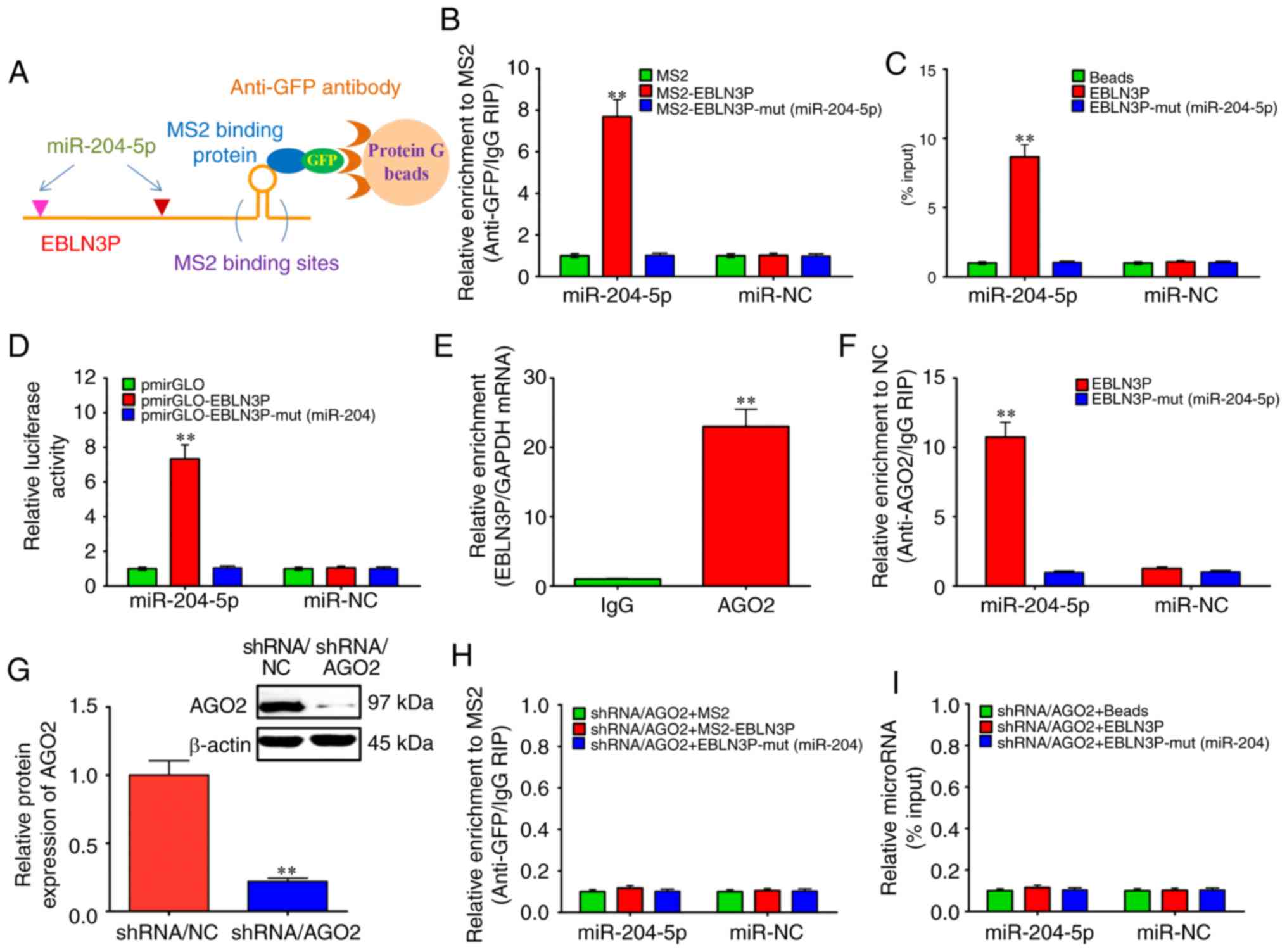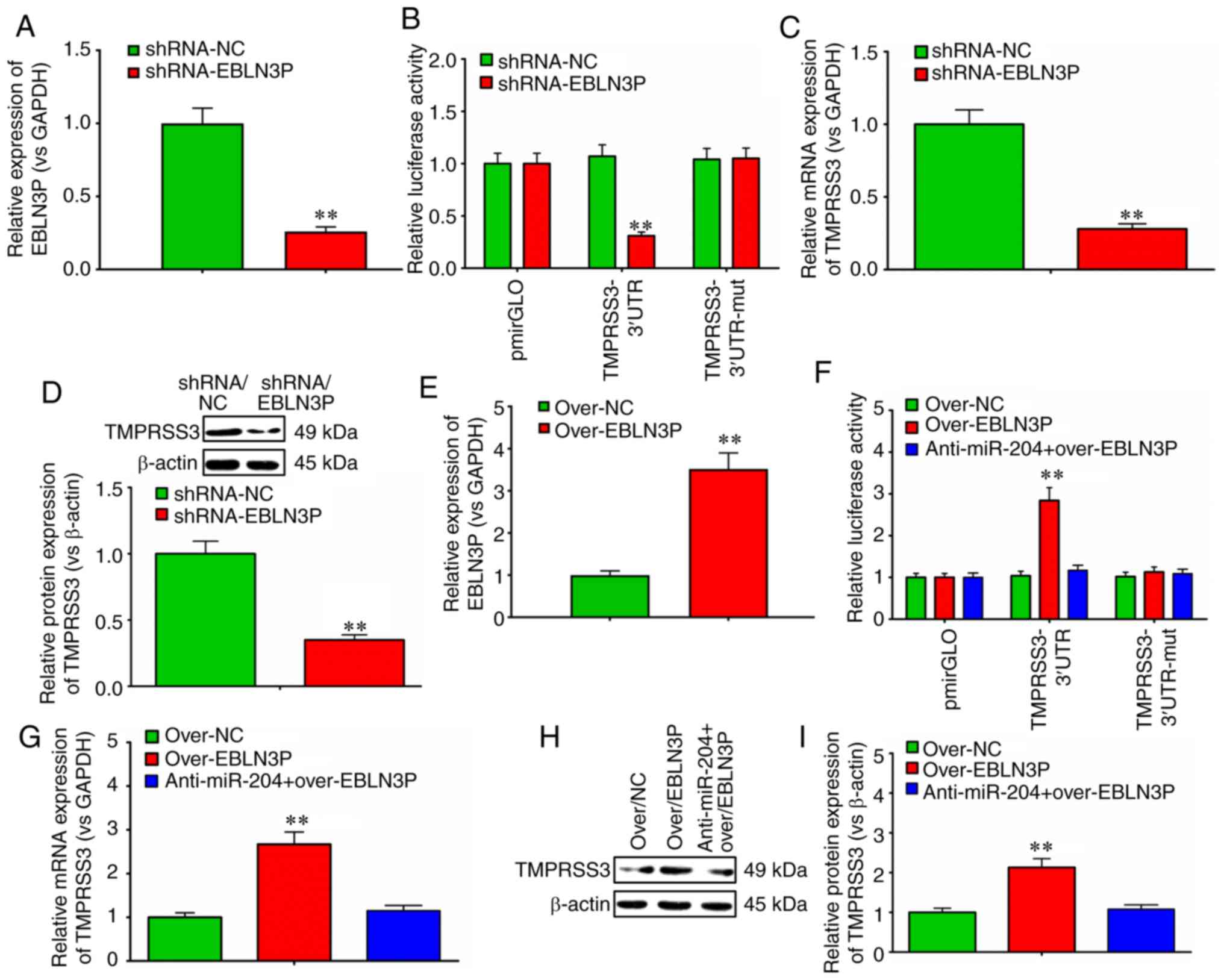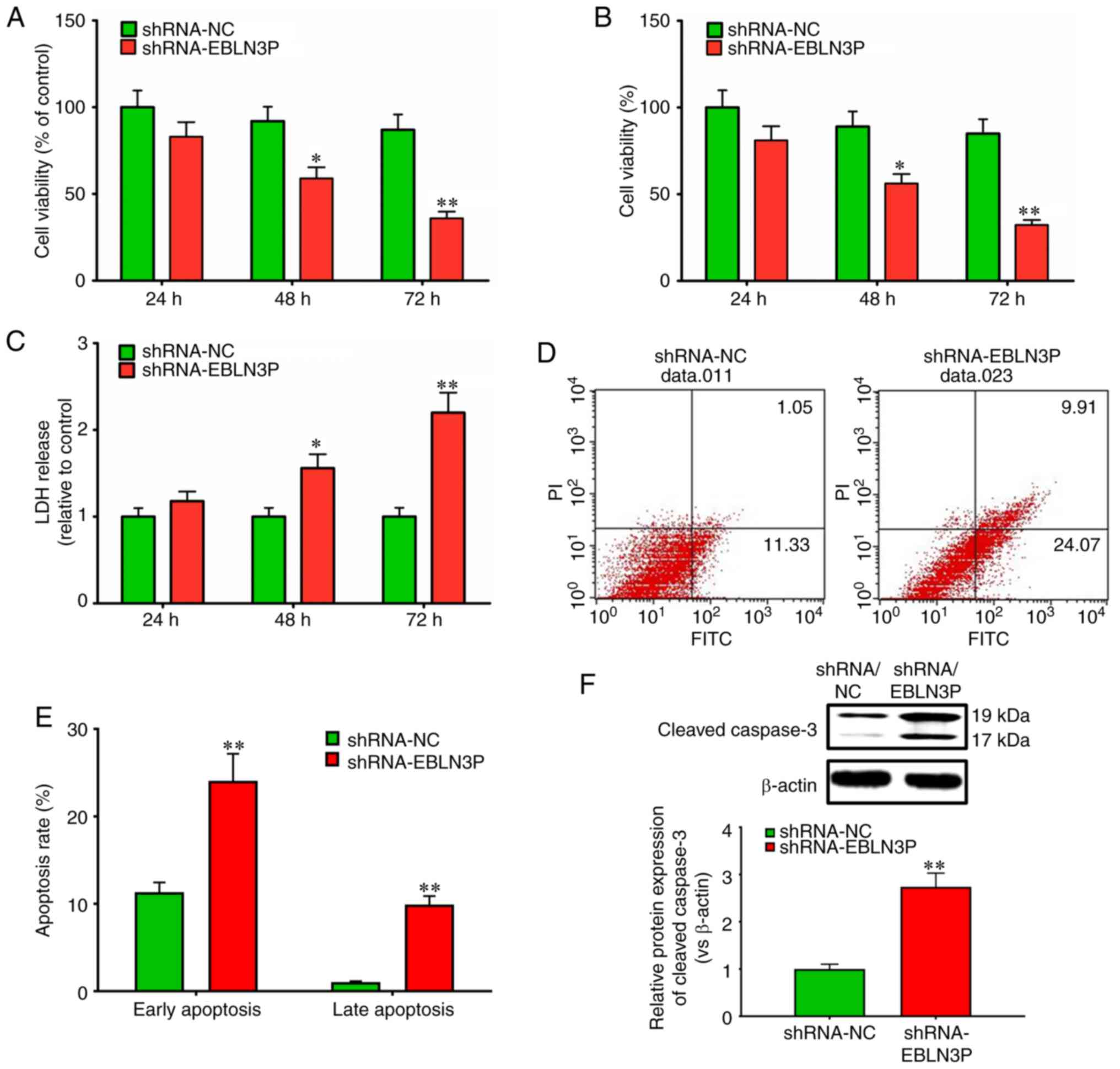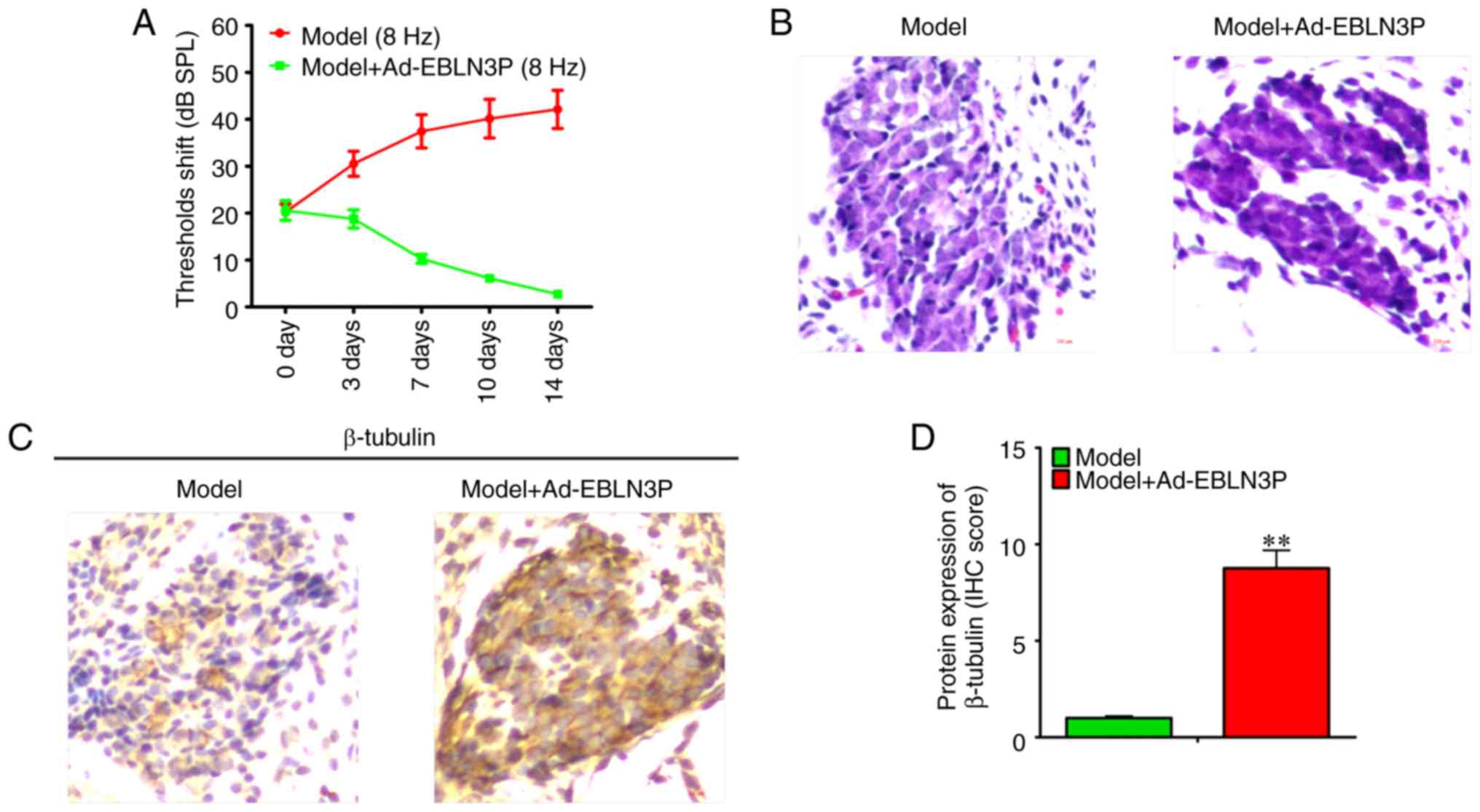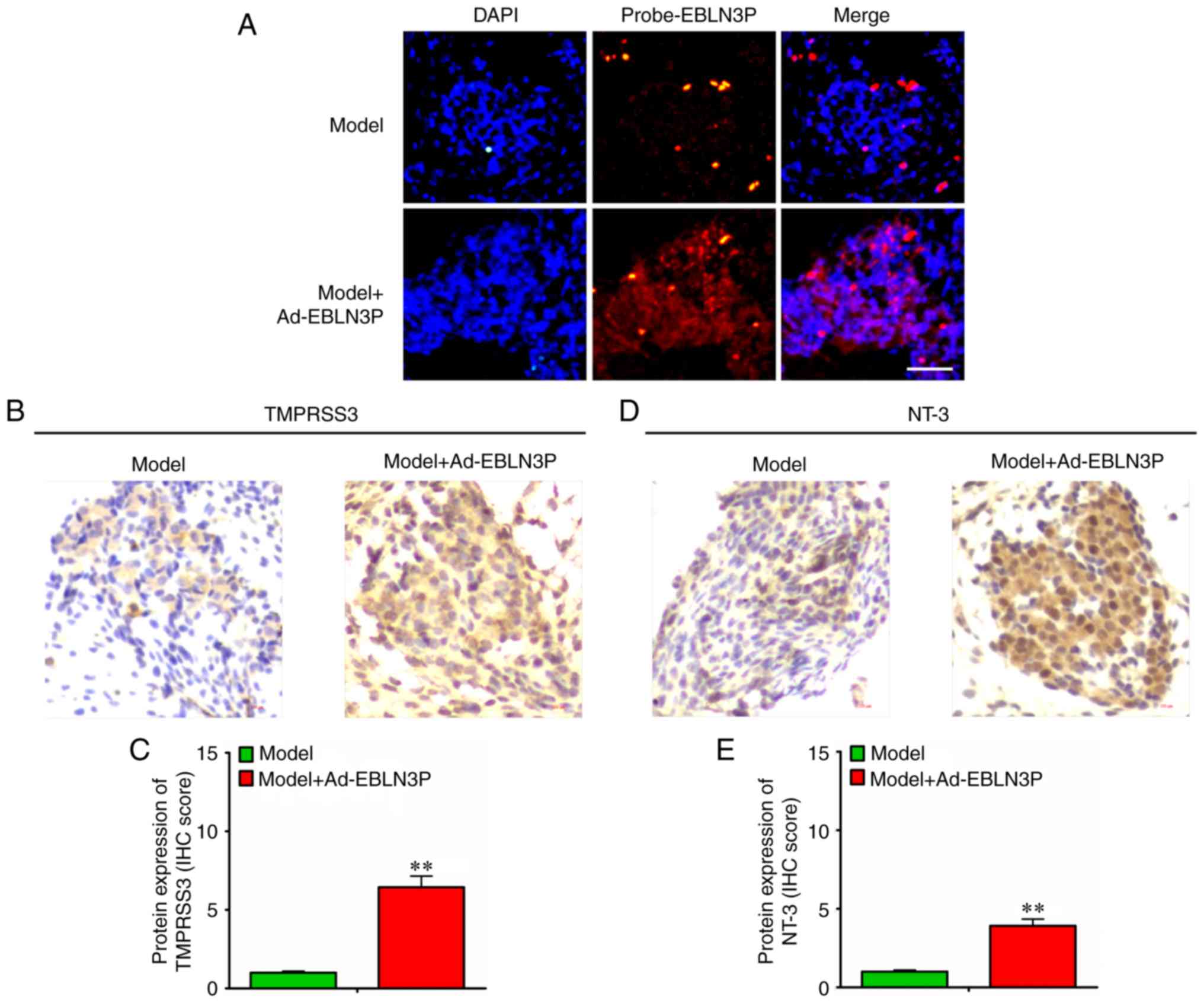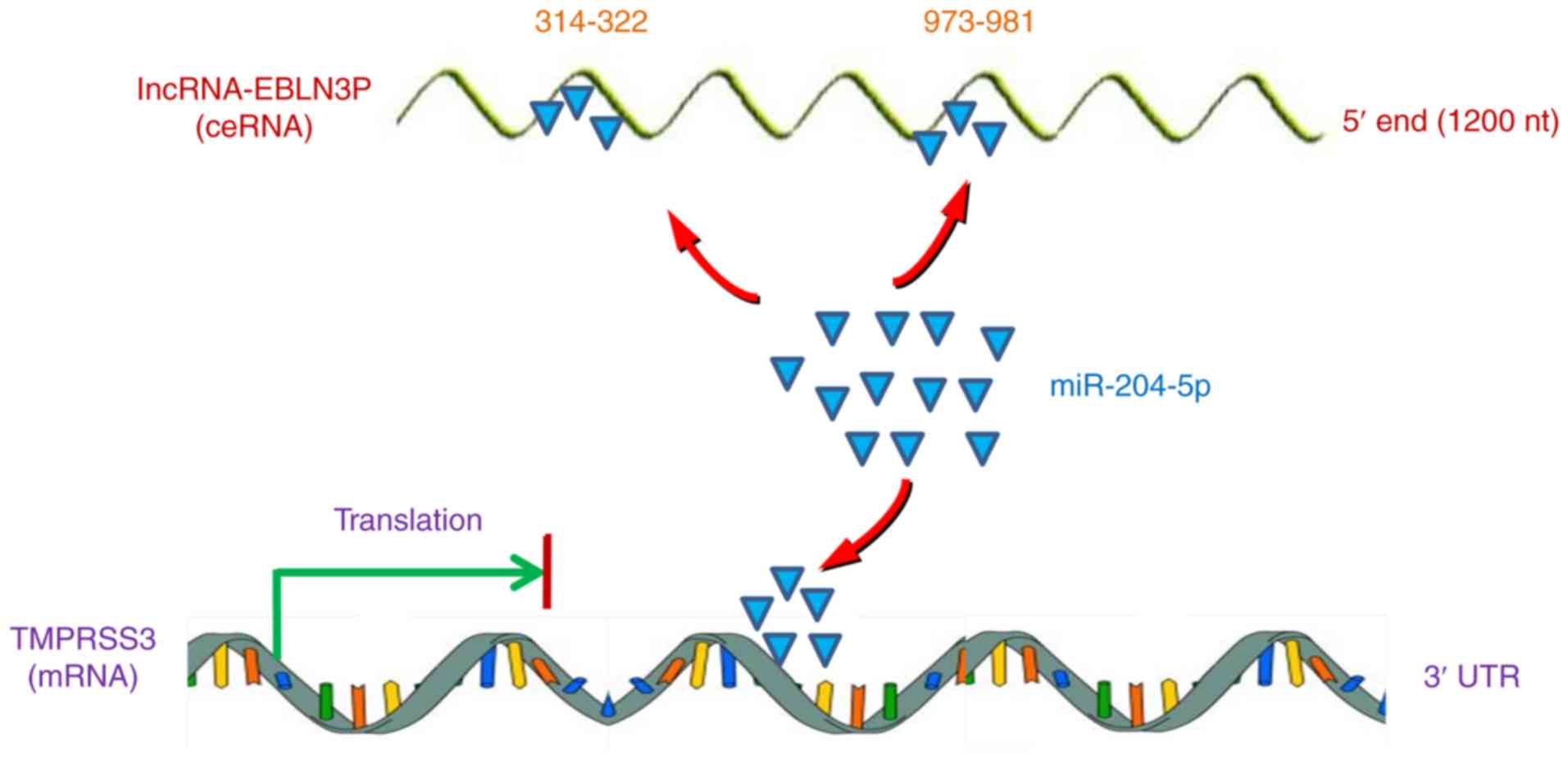|
1
|
Charizopoulou N, Lelli A, Schraders M, Ray
K, Hildebrand MS, Ramesh A, Srisailapathy CR, Oostrik J, Admiraal
RJ, Neely HR, et al: Gipc3 mutations associated with audiogenic
seizures and sensorineural hearing loss in mouse and human. Nat
Commun. 2:2012011. View Article : Google Scholar : PubMed/NCBI
|
|
2
|
Clark GM: Cochlear Implants: Fundamentals
and applications Graeme Clark. Springer; New York: 2003, View Article : Google Scholar
|
|
3
|
Feghali JG, Lefebvre PP, Staecker H, Kopke
R, Frenz DA, Malgrange B, Liu W, Moonen G, Ruben RJ and Van de
Water TR: Mammalian auditory hair cell regeneration/repair and
protection: A review and future directions. Ear Nose. Throat J.
77:276–280. 282–285. 1998. View Article : Google Scholar
|
|
4
|
Hardie NA and Shepherd RK: Sensorineural
hearing loss during development: Morphological and physiological
response of the cochlea and auditory brainstem. Hear Res.
128:147–165. 1999. View Article : Google Scholar : PubMed/NCBI
|
|
5
|
Dodson HC and Mohuiddin A: Response of
spiral ganglion neurones to cochlear hair cell destruction in the
guinea pig. J Neurocytol. 29:525–537. 2000. View Article : Google Scholar
|
|
6
|
Dror AA and Avraham KB: Hearing loss:
Mechanisms revealed by genetics and cell biology. Annu Rev Genet.
43:411–437. 2009. View Article : Google Scholar : PubMed/NCBI
|
|
7
|
Bindu LH and Reddy PP: Genetics of
aminoglycoside-induced and prelingual non-syndromic mitochondrial
hearing impairment: A review. Int J Audiol. 47:702–707. 2008.
View Article : Google Scholar : PubMed/NCBI
|
|
8
|
Wallrapp C, Hähnel S, Müller-Pillasch F,
Burghardt B, Iwamura T, Ruthenbürger M, Lerch MM, Adler G and Gress
TM: A novel transmembrane serine protease (TMPRSS3) overexpressed
in pancreatic cancer. Cancer Res. 60:2602–2606. 2000.PubMed/NCBI
|
|
9
|
Bugge TH, Antalis TM and Wu Q: Type II
transmembrane serine proteases. J Biol Chem. 284:23177–23181. 2009.
View Article : Google Scholar : PubMed/NCBI
|
|
10
|
Guipponi M, Toh MY, Tan J, Park D, Hanson
K, Ballana E, Kwong D, Cannon PZ, Wu Q, Gout A, et al: An
integrated genetic and functional analysis of the role of type II
transmembrane serine proteases (TMPRSSs) in hearing loss. Hum
Mutat. 29:130–141. 2008. View Article : Google Scholar
|
|
11
|
Guipponi M, Vuagniaux G, Wattenhofer M,
Shibuya K, Vazquez M, Dougherty L, Scamuffa N, Guida E, Okui M,
Rossier C, et al: The transmembrane serine protease (TMPRSS3)
mutated in deafness DFNB8/10 activates the epithelial sodium
channel (ENaC) in vitro. Hum Mol Genet. 11:2829–2836. 2002.
View Article : Google Scholar : PubMed/NCBI
|
|
12
|
Fasquelle L, Scott HS, Lenoir M, Wang J,
Rebillard G, Gaboyard S, Venteo S, François F, Mausset-Bonnefont
AL, Antonarakis SE, et al: Tmprss3, a transmembrane serine protease
deficient in human DFNB8/10 deafness, is critical for cochlear hair
cell survival at the onset of hearing. J Biol Chem.
286:17383–17397. 2001. View Article : Google Scholar
|
|
13
|
Ge S, Wang Q, Peng A, Wu W and Xie D:
Expression of proteinase TMPRSS3 in mouse cochlea. Zhong Nan Da Xue
Xue Bao Yi Xue Ban. 36:794–798. 2011.In Chinese. PubMed/NCBI
|
|
14
|
Li Y, Peng A, Ge S, Wang Q and Liu J:
MiR-204 suppresses cochlear spiral ganglion neuron survival in
vitro by targeting TMPRSS3. Hear Res. 314:60–64. 2014. View Article : Google Scholar : PubMed/NCBI
|
|
15
|
Ponting CP, Oliver PL and Reik W:
Evolution and functions of long noncoding RNAs. Cell. 136:629–641.
2009. View Article : Google Scholar : PubMed/NCBI
|
|
16
|
Mercer TR, Dinger ME and Mattick JS: Long
non-coding RNAs: Insights into functions. Nat Rev Genet.
10:155–159. 2009. View
Article : Google Scholar : PubMed/NCBI
|
|
17
|
Wilusz JE, Sunwoo H and Spector DL: Long
noncoding RNAs: Functional surprises from the RNA world. Genes Dev.
23:1494–1504. 2009. View Article : Google Scholar : PubMed/NCBI
|
|
18
|
Feng J, Bi C, Clark BS, Mady R, Shah P and
Kohtz JD: The Evf-2 noncoding RNA is transcribed from the Dlx-5/6
ultraconserved region and functions as a Dlx-2 transcriptional
coactivator. Genes Dev. 20:1470–1484. 2006. View Article : Google Scholar : PubMed/NCBI
|
|
19
|
Martianov I, Ramadass A, Serra Barros A,
Chow N and Akoulitchev A: Repression of the human dihydrofolate
reductase gene by a non-coding interfering transcript. Nature.
445:666–670. 2007. View Article : Google Scholar : PubMed/NCBI
|
|
20
|
Wang X, Arai S, Song X, Reichart D, Du K,
Pascual G, Tempst P, Rosenfeld MG, Glass CK and Kurokawa R: Induced
ncRNAs allosterically modify RNA-binding proteins in cis to inhibit
transcription. Nature. 454:126–130. 2008. View Article : Google Scholar : PubMed/NCBI
|
|
21
|
Bächinger D, Horvath L, Eckhard A,
Goosmann MM, Honegger T, Gassmann M, Vogel J and Naldi AM: Neuronal
erythropoietin overexpression is protective against
kanamycin-induced hearing loss in mice. Toxicol Lett. 291:121–128.
2018. View Article : Google Scholar : PubMed/NCBI
|
|
22
|
Ishikura F, Takano Y and Ueyama T: Acute
effects of beta-blocker with intrinsic sympathomimetic activity on
stress-induced cardiac dysfunction in rats. J Cardiol. 60:470–474.
2012. View Article : Google Scholar : PubMed/NCBI
|
|
23
|
Lina IA and Lauer AM: Rapid measurement of
auditory filter shape in mice using the auditory brainstem response
and notched noise. Hear Res. 298:73–79. 2013. View Article : Google Scholar : PubMed/NCBI
|
|
24
|
Gamma-aminobutyric acid A receptor and
N-methyl-D-aspartate receptor subunit expression in rat spiral
ganglion neurons. Neural Regen Res. 5:1–3. 2010.
|
|
25
|
Martinez-Monedero R, Corrales CE,
Cuajungco MP, Heller S and Edge AS: Reinnervation of hair cells by
auditory neurons after selective removal of spiral ganglion
neurons. J Neurobiol. 66:319–331. 2006. View Article : Google Scholar : PubMed/NCBI
|
|
26
|
Klahr AC, Dickson CT and Colbourne F:
Seizure activity occurs in the collagenase but not the blood
infusion model of striatal hemorrhagic stroke in rats. Transl
Stroke Res. 6:29–38. 2015. View Article : Google Scholar :
|
|
27
|
Livak KJ and Schmittgen TD: Analysis of
relative gene expression data using real-time quantitative PCR and
the 2(−Delta Delta C(T)) method. Methods. 25:402–408. 2001.
View Article : Google Scholar
|
|
28
|
Wang Y, Jiang SW, Liu X, Niu L, Ge XL,
Zhang JC, Wang HR, Fei AH, Gao CJ and Pan SM: Degradation of TRPML1
in neurons reduces neuron survival in transient global cerebral
ischemia. Oxid Med Cell Longev. 2018:46127272018. View Article : Google Scholar
|
|
29
|
Song L, Tang S, Dong L, Han X, Cong L,
Dong J, Han X, Zhang Q, Wang Y and Du Y: The neuroprotection of
KIBRA in promoting neuron survival and against amyloid β-induced
apoptosis. Front Cell Neurosci. 13:1372019. View Article : Google Scholar
|
|
30
|
Bogetofte H, Jensen P, Ryding M, Schmidt
SI, Okarmus J, Ritter L, Worm CS, Hohnholt MC, Azevedo C, Roybon L,
et al: PARK2 mutation causes metabolic disturbances and impaired
survival of human iPSC-derived neurons. Front Cell Neurosci.
13:2972019. View Article : Google Scholar :
|
|
31
|
Voss U, Sand E, Hellström PM and Ekblad E:
Glucagon-like peptides 1 and 2 and vasoactive intestinal peptide
are neuro-protective on cultured and mast cell co-cultured rat
myenteric neurons. BMC Gastroenterol. 12:302012. View Article : Google Scholar
|
|
32
|
Ishimoto S, Kawamoto K, Kanzaki S and
Raphael Y: Gene transfer into supporting cells of the organ of
Corti. Hear Res. 173:187–197. 2002. View Article : Google Scholar : PubMed/NCBI
|
|
33
|
Chandradoss SD, Schirle NT, Szczepaniak M,
MacRae IJ and Joo C: A dynamic search process underlies MicroRNA
targeting. Cell. 162:96–107. 2015. View Article : Google Scholar : PubMed/NCBI
|
|
34
|
Nishi K, Takahashi T, Suzawa M, Miyakawa
T, Nagasawa T, Ming Y, Tanokura M and Ui-Tei K: Control of the
localization and function of a miRNA silencing component TNRC6A by
argonaute protein. Nucleic Acids Res. 43:9856–9873. 2015.PubMed/NCBI
|
|
35
|
Schraivogel D, Schindler SG, Danner J,
Kremmer E, Pfaff J, Hannus S, Depping R and Meister G: Importin-β
facilitates nuclear import of human GW proteins and balances
cytoplasmic gene silencing protein levels. Nucleic Acids Res.
43:7447–7461. 2015. View Article : Google Scholar : PubMed/NCBI
|
|
36
|
Weinmann L, Höck J, Ivacevic T, Ohrt T,
Mütze J, Schwille P, Kremmer E, Benes V, Urlaub H and Meister G:
Importin 8 is a gene silencing factor that targets argonaute
proteins to distinct mRNAs. Cell. 136:496–507. 2009. View Article : Google Scholar : PubMed/NCBI
|
|
37
|
Kim YR, Baek JI, Kim SH, Kim MA, Lee B,
Ryu N, Kim KH, Choi DG, Kim HM, Murphy MP, et al: Therapeutic
potential of the mitochondria-targeted antioxidant MitoQ in
mitochondrial-ROS induced sensorineural hearing loss caused by Idh2
deficiency. Redox Biol. 20:544–555. 2019. View Article : Google Scholar
|
|
38
|
Hu H, Ye B, Zhang L, Wang Q, Liu Z, Ji S,
Liu Q, Lv J, Ma Y, Xu Y, et al: Efr3a insufficiency attenuates the
degeneration of spiral ganglion neurons after hair cell loss. Front
Mol Neurosci. 10:862017. View Article : Google Scholar :
|
|
39
|
Zhang PZ, He Y, Jiang XW, Chen FQ, Chen Y,
Shi L, Chen J, Chen X, Li X, Xue T, et al: Stem cell
transplantation via the cochlear lateral wall for replacement of
degenerated spiral ganglion neurons. Hear Res. 298:1–9. 2013.
View Article : Google Scholar : PubMed/NCBI
|
|
40
|
Lee K, Khan S, Islam A, Ansar M, Andrade
PB, Kim S, Santos-Cortez RL, Ahmad W and Leal SM: Novel TMPRSS3
variants in Pakistani families with autosomal recessive
non-syndromic hearing impairment. Clin Genet. 82:56–63. 2012.
View Article : Google Scholar
|
|
41
|
Walsh T, Abu Rayan A, Abu Sa'ed J, Shahin
H, Shepshelovich J, Lee MK, Hirschberg K, Tekin M, Salhab W,
Avraham KB, et al: Genomic analysis of a heterogeneous Mendelian
phenotype: Multiple novel alleles for inherited hearing loss in the
Palestinian population. Hum Genomics. 2:203–211. 2006. View Article : Google Scholar : PubMed/NCBI
|
|
42
|
Wattenhofer M, Sahin-Calapoglu N,
Andreasen D, Kalay E, Caylan R, Braillard B, Fowler-Jaeger N,
Reymond A, Rossier BC, Karaguzel A and Antonarakis SE: A novel
TMPRSS3 missense mutation in a DFNB8/10 family prevents proteolytic
activation of the protein. Hum Genet. 117:528–535. 2005. View Article : Google Scholar : PubMed/NCBI
|
|
43
|
Charif M, Abidi O, Boulouiz R, Nahili H,
Rouba H, Kandil M, Delprat B, Lenaers G and Barakat A: Molecular
analysis of the TMPRSS3 gene in Moroccan families with
non-syndromic hearing loss. Biochem Biophys Res Commun.
419:643–647. 2012. View Article : Google Scholar : PubMed/NCBI
|
|
44
|
Hutchin T, Coy NN, Conlon H, Telford E,
Bromelow K, Blaydon D, Taylor G, Coghill E, Brown S, Trembath R, et
al: Assessment of the genetic causes of recessive childhood
non-syndromic deafness in the UK-implications for genetic testing.
Clin Genet. 68:506–512. 2005. View Article : Google Scholar : PubMed/NCBI
|
|
45
|
Masmoudi S, Antonarakis SE, Schwede T,
Ghorbel AM, Gratri M, Pappasavas MP, Drira M, Elgaied-Boulila A,
Wattenhofer M, Rossier C, et al: Novel missense mutations of
TMPRSS3 in two consanguineous Tunisian families with non-syndromic
autosomal recessive deafness. Hum Mutat. 18:101–108. 2001.
View Article : Google Scholar : PubMed/NCBI
|
|
46
|
Lee J, Baek JI, Choi JY, Kim UK, Lee SH
and Lee KY: Genetic analysis of TMPRSS3 gene in the Korean
population with autosomal recessive nonsyndromic hearing loss.
Gene. 532:276–280. 2013. View Article : Google Scholar : PubMed/NCBI
|
|
47
|
Eppsteiner RW, Shearer AE, Hildebrand MS,
Deluca AP, Ji H, Dunn CC, Black-Ziegelbein EA, Casavant TL, Braun
TA, Scheetz TE, et al: Prediction of cochlear implant performance
by genetic mutation: The spiral ganglion hypothesis. Hear Res.
292:51–58. 2012. View Article : Google Scholar : PubMed/NCBI
|
|
48
|
Strausberg RL, Feingold EA, Grouse LH,
Derge JG, Klausner RD, Collins FS, Wagner L, Shenmen CM, Schuler
GD, Altschul SF, et al: Generation and initial analysis of more
than 15,000 full-length human and mouse cDNA sequences. Proc Natl
Acad Sci USA. 99:16899–16903. 2002. View Article : Google Scholar : PubMed/NCBI
|
|
49
|
Ota T, Suzuki Y, Nishikawa T, Otsuki T,
Sugiyama T, Irie R, Wakamatsu A, Hayashi K, Sato H, Nagai K, et al:
Complete sequencing and characterization of 21,243 full-length
human cDNAs. Nat Genet. 36:40–45. 2004. View Article : Google Scholar : PubMed/NCBI
|
|
50
|
Liu SJ, Horlbeck MA, Cho SW, Birk HS,
Malatesta M, He D, Attenello FJ, Villalta JE, Cho MY, Chen Y, et
al: CRISPRi-based genome-scale identification of functional long
noncoding RNA loci in human cells. Science. 355:pii: aah7111. 2017.
View Article : Google Scholar
|
|
51
|
Liang H, Pan Z, Zhao X, Liu L, Sun J, Su
X, Xu C, Zhou Y, Zhao D, Xu B, et al: LncRNA PFL contributes to
cardiac fibrosis by acting as a competing endogenous RNA of let-7d.
Theranostics. 8:1180–1194. 2018. View Article : Google Scholar : PubMed/NCBI
|
|
52
|
Qiu YY, Wu Y, Lin MJ, Bian T, Xiao YL and
Qin C: LncRNA-MEG3 functions as a competing endogenous RNA to
regulate Treg/Th17 balance in patients with asthma by targeting
microRNA-17/RORγt. Biomed Pharmacother. 111:386–394. 2019.
View Article : Google Scholar
|
|
53
|
Ji Q, Cai G, Liu X, Zhang Y, Wang Y, Zhou
L, Sui H and Li Q: MALAT1 regulates the transcriptional and
translational levels of proto-oncogene RUNX2 in colorectal cancer
metastasis. Cell Death Dis. 10:3782019. View Article : Google Scholar : PubMed/NCBI
|
















